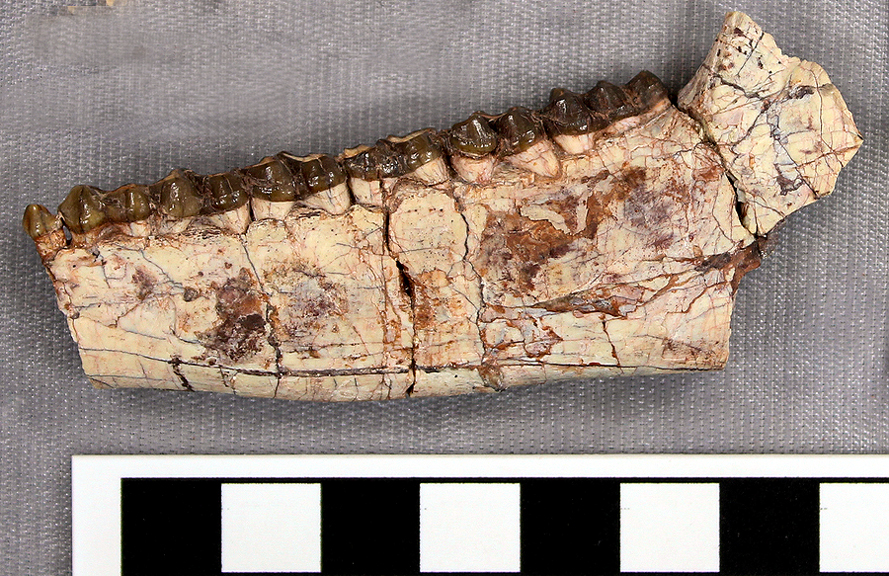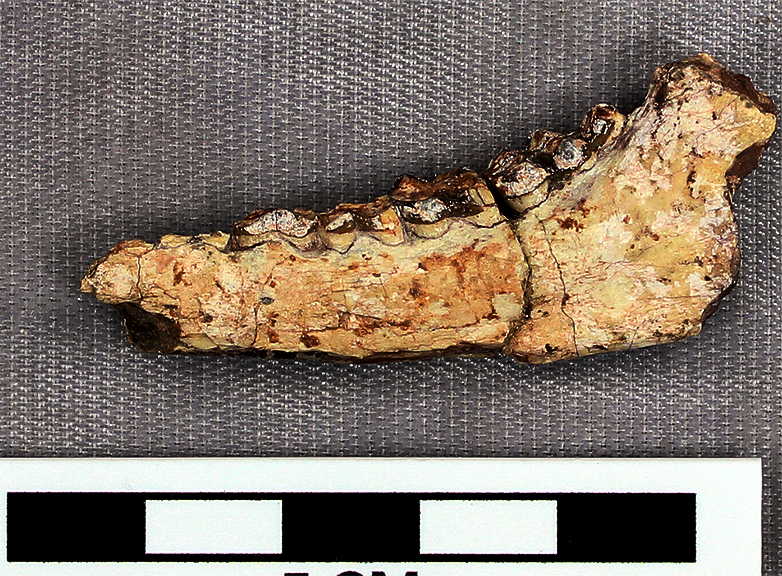


|
Both specimens came from the late middle Eocene Titus Canyon Formation, Titus Canyon area, Death Valley National Park, California. Specimen at top is a partial lower jaw from an early horse, called Mesohippus westoni. Fossil in bottom photograph is a partial lower jaw from an extinct mammal called Leptomeryx blacki, a rather small hornless ruminant whose closest modern counterpart is the Chevrotain or mouse-deer, which lives in the forests of south and southeast Asia, and the rainforests of central and west Africa. Both specimsn collected by J. H. Hutchinson of the California Institute of Techology. Horse jaw collected on April 24, 1987; the Leptomeryx jaw, on April 25, 1987. Images ©2020 University of California Museum of Paleontology; photographed by Eric Holt. I edited the images with photoshop. Used here under the parameters of the Creative Commons Attribution 3.0 (CC BY 3.0) license. |